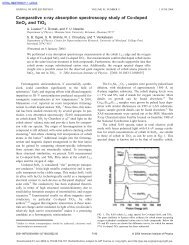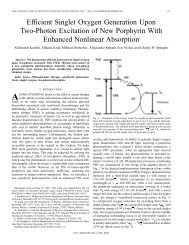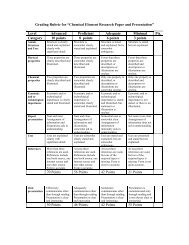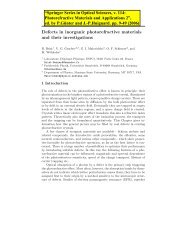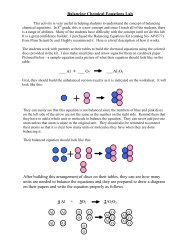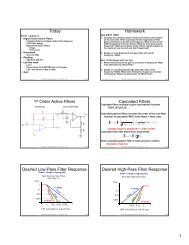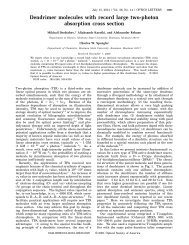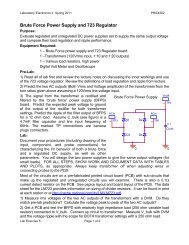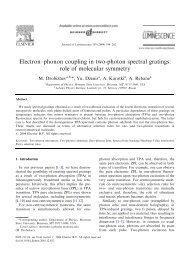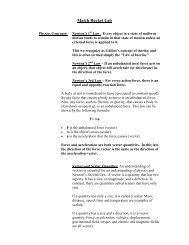Practical Uses and Applications of Electro-Optic Modulators
Practical Uses and Applications of Electro-Optic Modulators
Practical Uses and Applications of Electro-Optic Modulators
Create successful ePaper yourself
Turn your PDF publications into a flip-book with our unique Google optimized e-Paper software.
trode separation. A commonly used figure <strong>of</strong> merit for<br />
electro-optic modulators is the half-wave voltage,<br />
V π<br />
. It is defined as the voltage required to produce an<br />
electro-optic phase shift <strong>of</strong> 180°. Substituting into the<br />
preceding equation yields<br />
for a transverse phase modulator.<br />
It is important to note that the properties <strong>of</strong> a<br />
phase-modulated optical beam do not differ in any way<br />
from those <strong>of</strong> any other phase-modulated carrier wave. 4<br />
Most importantly, phase modulation cannot be separated<br />
from frequency modulation. The instantaneous<br />
frequency <strong>of</strong> a periodic signal is defined as the time<br />
derivative <strong>of</strong> the overall phase <strong>of</strong> the signal. Therefore,<br />
for a phase-modulated signal<br />
where f(t) is the instantaneous frequency, ∆φ(t) is the<br />
signal’s global phase, <strong>and</strong> ω is the optical frequency.<br />
Given a phase modulation ∆φ(t)= msinΩ<br />
t where m is<br />
the phase-modulation index, sinusoidal phase modulation<br />
results in sinusoidal frequency modulation at a<br />
fixed frequency Ω, but with a 90° phase lag <strong>and</strong> a<br />
peak-to-peak excursion <strong>of</strong> 2m Ω.<br />
The phase-modulated field amplitude can be represented<br />
as a set <strong>of</strong> Fourier components in which power<br />
exists only at the discrete optical frequenciesω ± kΩ<br />
E<br />
]<br />
pm<br />
≡ E e<br />
o<br />
p [ ]<br />
d t d t<br />
( t )<br />
Φ( ) φ<br />
≡ = +<br />
( )<br />
ω<br />
2π f<br />
i[ ωt+<br />
msin Ω t]<br />
⎧ ∞<br />
∞<br />
ikΩt k −ikΩt<br />
⎫ i<br />
≡ Eo⎨∑<br />
Jk( m) e + ∑( −1) Jk( m)<br />
e ⎬e<br />
⎩k=<br />
0<br />
k=<br />
0<br />
⎭<br />
where k is an integer, m is the phase-modulation index<br />
(modulation depth) <strong>and</strong> J k (m) is the ordinary Bessel<br />
function <strong>of</strong> order k.<br />
In the case <strong>of</strong> small modulation index, m





